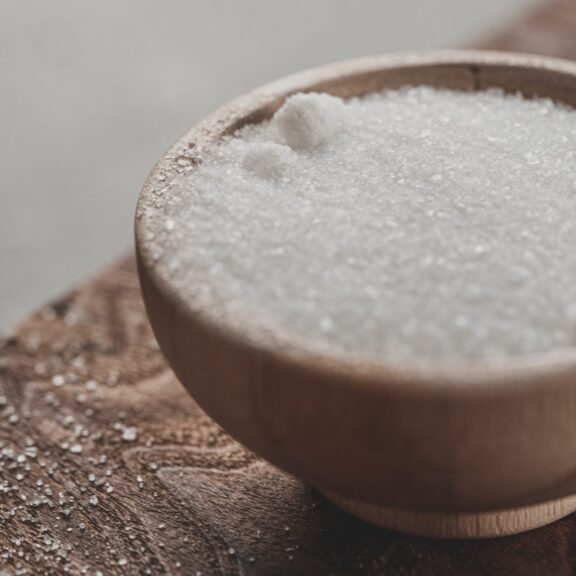Magnesium: The Magic Mineral
Today we are sharing some information with you about our favorite mineral, MAGNESIUM, and why it is vitally important for us, especially as we hit mid life.
As the 4th most abundant mineral in the body, more than half our magnesium is stored in our bones, while the rest is in muscles, soft tissues, and fluids, including the blood.
Magnesium is involved in hundreds of biochemical reactions. Literally EVERY cell in our body contains magnesium and needs it to function properly.
First and foremost, magnesium acts as a co-factor or “helper” to many enzymes which are involved in the production of energy, protein formation, gene maintenance, muscle movements and nerve support.
This is precisely why this magic mineral is known to be so beneficial for the following:
- Supporting the regulation of blood pressure by relaxing smooth muscles so they don’t restrict the flow of blood
- Aiding in blood glucose regulation; in fact, studies have shown it can improve insulin resistance for those with pre-diabetes and diabetes
- Reducing calcium build-up in your heart and arteries (more on calcium here)
- Promoting better sleep by relaxing your muscles as well as calming nerves
- Acting as a KEY factor for healthy bones; not only is it an essential co-factor for Vitamin D synthesis, it also reduces the rate of bone breakdown
- Reducing stress by increasing GABA and relaxing the nervous system (helps turn off the stress response)
- Relieving constipation by relaxing smooth muscles in the digestive tract (magnesium citrate form)
- Reducing the frequency of migraines, especially when combined with B2
- Supports Vitamin D activation and metabolism, by acting as a co-factor in the conversion and activation for Vitamin D.
Note that in those deficient in magnesium, taking high doses of vitamin D could WORSEN magnesium deficiency and increase the potential for side effects of taking too much D, such as increasing risk of calcium deposits in the arteries.
So who isn’t getting enough magnesium? Most of us! More than 70% of US adults currently do not meet the recommended daily allowance (RDA).
That’s because in addition to stress, other factors can deplete magnesium levels such as gastrointestinal issues, poor quality soil, diabetes, excess alcohol, use of diuretics, and sub-par dietary intake.
For these reasons, low levels of magnesium have been associated with a variety of health issues including diabetes, hypertension, osteoporosis, cardiovascular and neurological diseases, including depression.
So how much magnesium do we need? And which foods have the most?
Ideally, you want to get at least 400mg of magnesium a day. When it comes to food, here are some of the best sources:
+ Nuts and most seeds (1oz = 82mg)
+ Pumpkin seeds (1oz = 150mg)
+ Leafy greens (1 cup cooked = 150mg)
+ Beans/legumes (1 cup = 120mg)
+ Dark chocolate (1oz = 64mg)
+ Avocado (1/2 = 27mg)
+ Fatty fish (6oz = 55mg)
As you can see, getting your daily dose of 400mg daily can be a challenge. We often suggest magnesium supplements to enhance food intake, but buyer beware.
Many commercial supplements contain a form of magnesium called magnesium oxide, which is poorly absorbed.
Here’s the lowdown on what we recommend most often:
- If you have trouble with constipation, go for magnesium citrate, which can help gently relax the bowels without acting like a laxative, and is still well absorbed.
- Otherwise, we prefer magnesium glycinate. We favor brands from companies such as Pure Encapsulations, Klaire, or Vital Nutrients.
- You can find these and other supplements in our Fullscript dispensary at 20% off.
Another option that has been found to be quickly absorbed by the body is using topical magnesium.
For a spray, we like this one from Ancient Minerals. Note that some do not like the feeling of this spray as it has a bit of a tacky feeling (we suggest spraying your feet with it at bedtime). And just be sure to never spray on a cut or wound because it can sting. For a lotion, we favor ReMag from Carolyn Dean. They are great to apply before bed as they can help with sleep.

THE NOURISHING GURUS
Jane and Stephanie, creators of The Simply Nourished Solution™, are nutritionists who help women over 50 go from overweight, frustrated, and inflamed to lighter and healthier so they can be more active, feel good in their bodies, and live the second half of life with energy and confidence. Their 3-pronged approach, which can fit into any lifestyle, encompasses not only wholesome energizing foods but powerful habit and mindset shifts.
CATEGORIES
What’s blocking your weight loss success?

You can still lose weight after 50 - even if you’ve been trying your whole life! Find out what’s standing between you and the healthy weight, energy and freedom you’re looking for.
Supported weight loss for women over 50
If you’re struggling to nourish yourself after menopause, our Simply Nourished Solution™ Signature Weight Loss Program offers the tools, strategies and shifts you need to stop yo-yo dieting, permanently lose weight, and feel better than ever in your 50’s, 60’s and beyond.


